
Robert Samuel Langer Jr. FREng is an American biotechnologist, businessman, chemical engineer, chemist, and inventor. He is one of the nine Institute Professors at the Massachusetts Institute of Technology.

Nicholas A. Kotov is the Irving Langmuir Distinguished Professor of Chemical Sciences and Engineering at the University of Michigan in Ann Arbor, MI, USA. Prof. Nicholas Kotov demonstrated that the ability to self-organize into complex structures is the unifying property of all inorganic nanostructures. He has developed a family of bioinspired composite materials with a wide spectrum of properties that were previously unattainable in classical materials. These composite biomimetic materials are exemplified by his nacre-like ultrastrong yet transparent composites, enamel-like, stiff yet vibration-isolating composites, and cartilage-like membranes with both high strength and ion conductance.
Martina Heide Stenzel is a Professor in the Department of Chemistry at the University of New South Wales (UNSW). She is also a Royal Australian Chemical Institute (RACI) University Ambassador. She became editor for the Australian Journal of Chemistry in 2008 and has served as Scientific Editor and as of 2021, as Editorial Board Chair of RSC Materials Horizons.
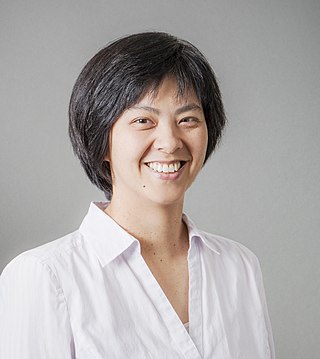
Ellis Meng is the Shelly and Ofer Nemirovsky Chair of Convergent Biosciences and Professor of Biomedical Engineering and Electrical and Computer Engineering in the Viterbi School of Engineering at the University of Southern California, where she also serves as the Vice Dean of Technology Innovation and Entrepreneurship. Meng is highly decorated in the development of novel micro- and nanotechnologies for biomedical applications. In 2009, Meng was named on MIT Technology Review's "Innovators Under 35" List for her work on micropumps that deliver drugs preventing blindness, and she was listed on the 40 Under 40 List of the Medical Device and Diagnostic Industry (MDDI) in 2012.
Anna Christina Balazs is an American materials scientist and engineer. She currently is Distinguished Professor at the University of Pittsburgh and holds the John A. Swanson Chair at the Swanson School of Engineering.
Vincent Rotello is an American materials scientist and engineer currently the Charles A. Goessmann Professor of Chemistry and a University Distinguished Professor at the University of Massachusetts at Amherst and the current Editor-in-Chief of American Chemical Society's Bioconjugate Chemistry. He joined the faculty at the University of Massachusetts in 1993, and has been the recipient of the NSF CAREER and Cottrell Scholar awards, as well as the Camille Dreyfus Teacher-Scholar, the Sloan Fellowships. More recently, he has received the Langmuir Lectureship (2010), and in 2016 he received the Transformational Research and Excellence in Education Award presented by Research Corporation, the Bioorganic Lectureship of the Royal Society of Chemistry (UK), the Australian Nanotechnology Network Traveling Fellowship, and the Chinese Academy of Sciences, President's International Fellowship for Distinguished Researchers. He is a Fellow of both the American Association for the Advancement of Science (AAAS) and of the Royal Society of Chemistry (U.K.). He is also recognized in 2014, 2015 and 2018 by Thomson Reuters/Clarivate as “Highly Cited Researcher”. He is currently the Editor in Chief of Bioconjugate Chemistry, and is on the Editorial Board of 14 other journals. His research program focuses on using synthetic organic chemistry to engineer the interface between the synthetic and biological worlds, and spans the areas of devices, polymers, and nanotechnology/bionanotechnology, with over 550 peer-reviewed papers published to date. He is actively involved in the area of bionanotechnology, and his research includes programs in delivery, imaging, diagnostics and nanotoxicology.
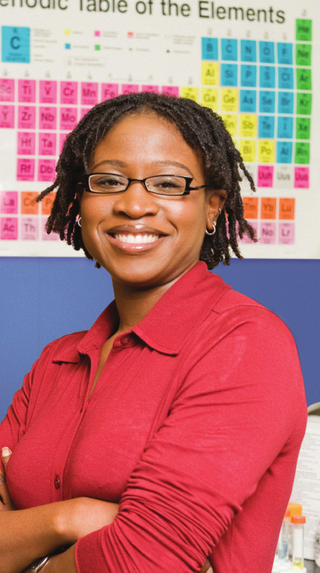
Omolola (Lola) Eniola-Adefeso is a Nigerian-American chemical engineer and the University Diversity and Social Transformation Professor of Chemical Engineering, Biomedical Engineering, and Macromolecular Science and Engineering at the University of Michigan. Eniola-Adefeso is also a co-founder and chief scientific officer of Asalyxa Bio. Her research looks to design biocompatible functional particles for targeted drug delivery.
Eilaf Egap is an adjunct assistant professor of Materials Science at Rice University. She works on imaging techniques and biomaterials for early diagnostics and drug delivery. She was a Massachusetts Institute of Technology MLK Visiting Scholar in 2011.
Erin Baker Lavik is a professor of chemical, biochemical, and environmental engineering at the University of Maryland, Baltimore County. Lavik develops polymers and nanoparticles that can protect the nervous system. She is a fellow of the American Institute for Medical and Biological Engineering.
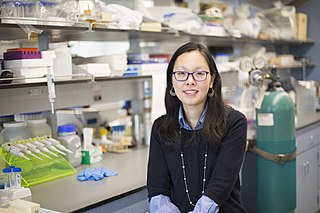
Jin Kim Montclare is a Professor of Chemical and Biomolecular Engineering at New York University. She creates novel proteins that can be used in drug delivery, tissue regeneration, and medical treatment. She is a 2019 AAAS Leshner Leadership Fellow and has been inducted into the AIMBE College of Fellows.
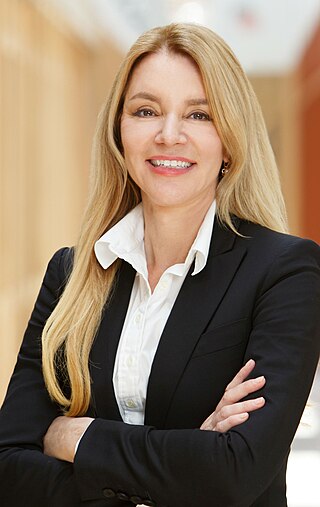
Eva M. Harth FRSC is a German-American polymer scientist and researcher, and a fellow of both the Royal Society of Chemistry and the American Chemical Society. She is a full professor at the University of Houston and director of the Welch Center for Excellence in Polymer Chemistry.
Jodie L. Lutkenhaus is a Professor of Chemical Engineering at Texas A&M University who develops redox active polymers for energy storage and smart coatings. In 2019 Lutkenhaus and Karen L. Wooley demonstrated the world's first biodegradable peptide battery. Lutkenhaus is a World Economic Forum Young Scientist.

LaShanda Teresa James Korley is a Distinguished Professor of Materials Science at the University of Delaware and an expert in soft matter, polymers, and nature-inspired materials. On a larger scale, Korley is also working on developing strategies and technologies to prevent plastic waste in landfills and oceans by upcycling plastic waste to more valuable products. She leads such efforts through the Center for Plastics Innovation, the Center for Research in Soft Matter and Polymers, and also the Center for Hybrid, Active, and Responsive Materials (CHARM). Korley was awarded the 2019 National Organization for the Professional Advancement of Black Chemists and Chemical Engineers Lloyd N. Ferguson Young Scientist Award for Excellence in Research.
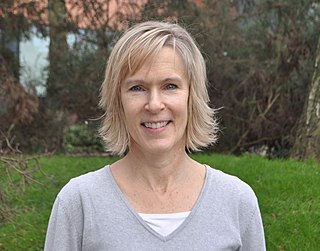
Kristi Lynn Kiick is the Blue and Gold Distinguished Professor of Materials Science and Engineering at the University of Delaware. She studies polymers, biomaterials and hydrogels for drug delivery and regenerative medicine. She is a Fellow of the American Chemical Society, the American Institute for Medical and Biological Engineering, and of the National Academy of Inventors. She served for nearly eight years as the deputy dean of the college of engineering at the University of Delaware.
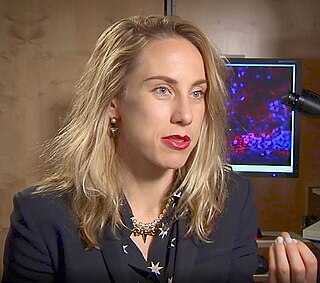
Polina Olegovna Anikeeva is a Russian-born American materials scientist who is a Professor of Material Science & Engineering as well as Brain & Cognitive Sciences at the Massachusetts Institute of Technology (MIT). She also holds faculty appointments in the McGovern Institute for Brain Research and Research Laboratory of Electronics at MIT. Her research is centered on developing tools for studying the underlying molecular and cellular bases of behavior and neurological diseases. She was awarded the 2018 Vilcek Foundation Prize for Creative Promise in Biomedical Science, the 2020 MacVicar Faculty Fellowship at MIT, and in 2015 was named a MIT Technology Review Innovator Under 35.

Markita del Carpio Landry is a Bolivian-American chemist who is an associate professor in the department of chemical engineering at the University of California, Berkeley. Her research considers nanomaterials for brain imaging and the development of sustainable crops. She was a recipient of the 2022 Vilcek prize for creative promise. del Carpio Landry's work has been featured on NPR, popular mechanics, the San Francisco Chronicle, and C&E News.
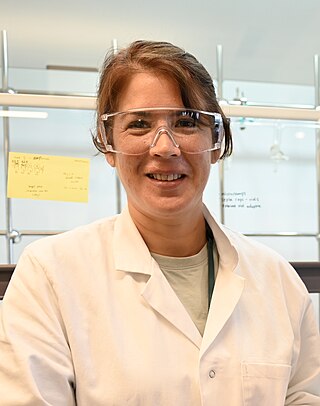
Christine Luscombe is a Japanese-British chemist who is a professor at the Okinawa Institute of Science and Technology. Her research investigates polymer chemistry, organic electronics, organic photovoltaics and the synthesis of novel materials for processable electronics. She serves on the editorial boards of Macromolecules, Advanced Functional Materials, the Annual Review of Materials Research and ACS Applied Materials & Interfaces.

Liangfang Zhang is a Chinese-American nanoengineer. He is the Chancellor Professor of Nanoengineering and Bioengineering and Director of Chemical Engineering at the University of California, San Diego. Zhang is a Fellow of the American Institute for Medical and Biological Engineering, American Association for the Advancement of Science, and the National Academy of Inventors.
Julie Anne Champion is a professor of chemistry who holds the William R. McLain Endowed Term Professorship at Georgia Institute of Technology. She is known for her work on biomaterials used for drug delivery.

Guangzhao Mao is an American chemical engineer and an academic. She is a professor and head of the school of chemical engineering at the University of New South Wales. She holds positions as chief investigator at the Australian Research Council (ARC) Centre of Excellence for Carbon Science and Innovation, the ARC Research Hub for Resilient Intelligent Infrastructure Systems, and the ARC Research Hub for Connected Sensors for Health.














